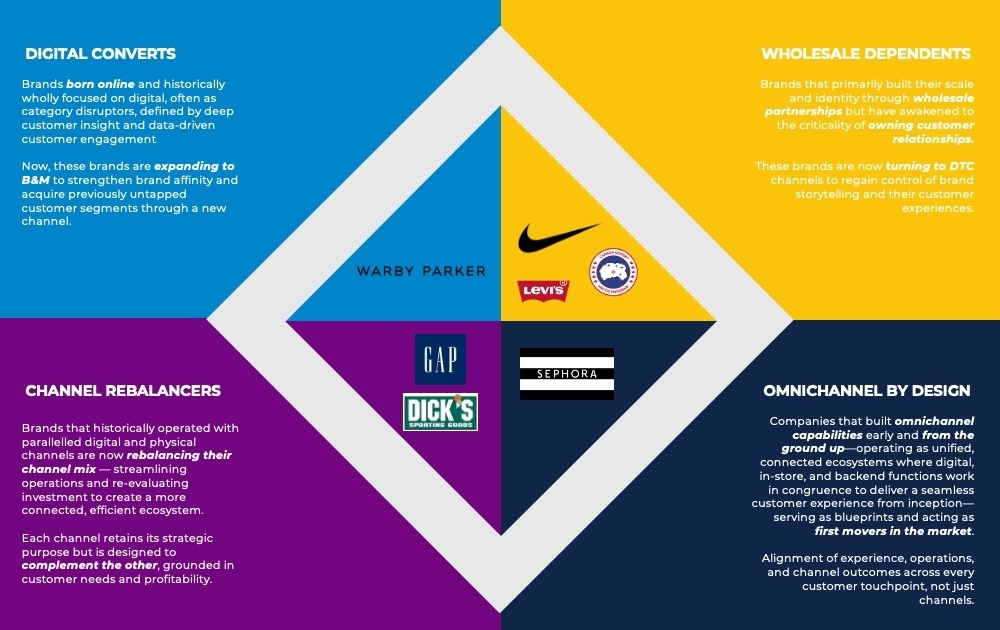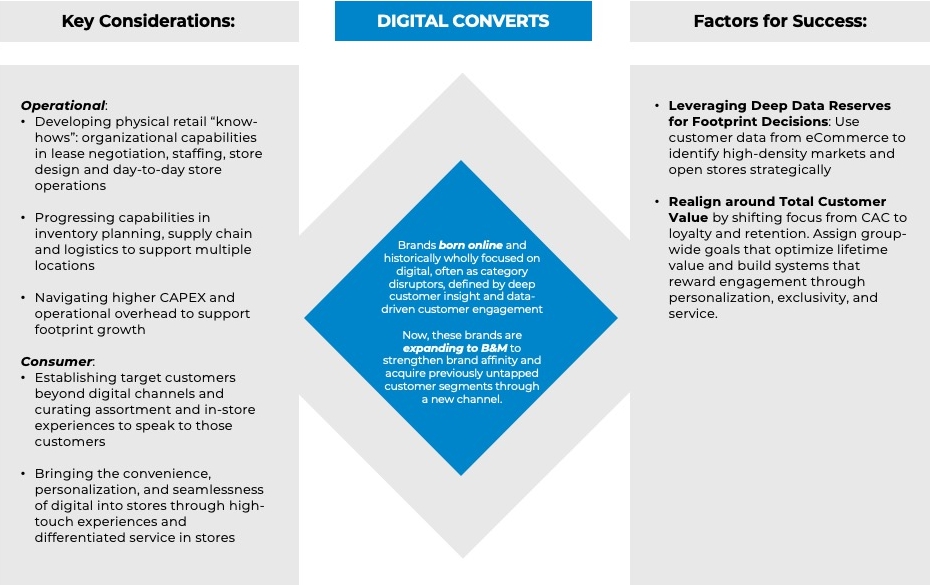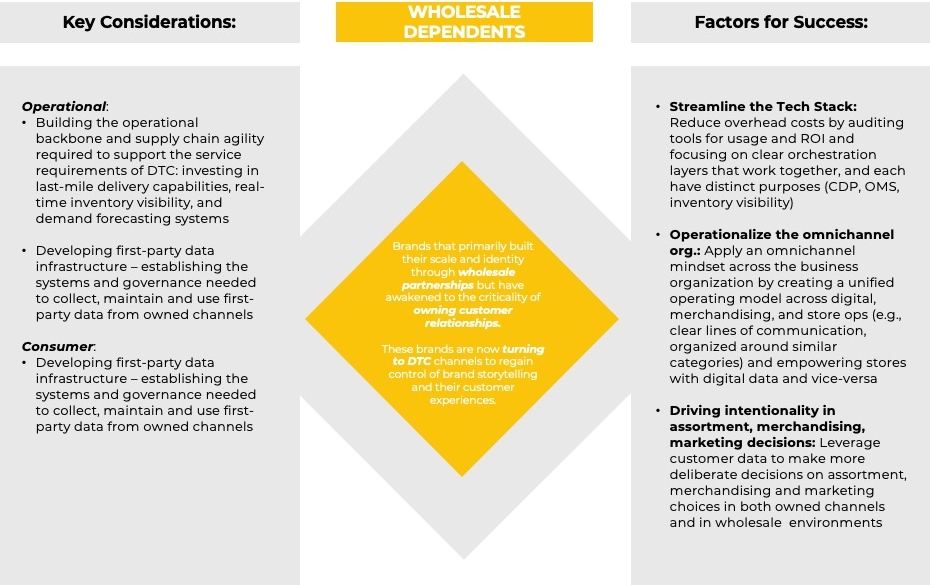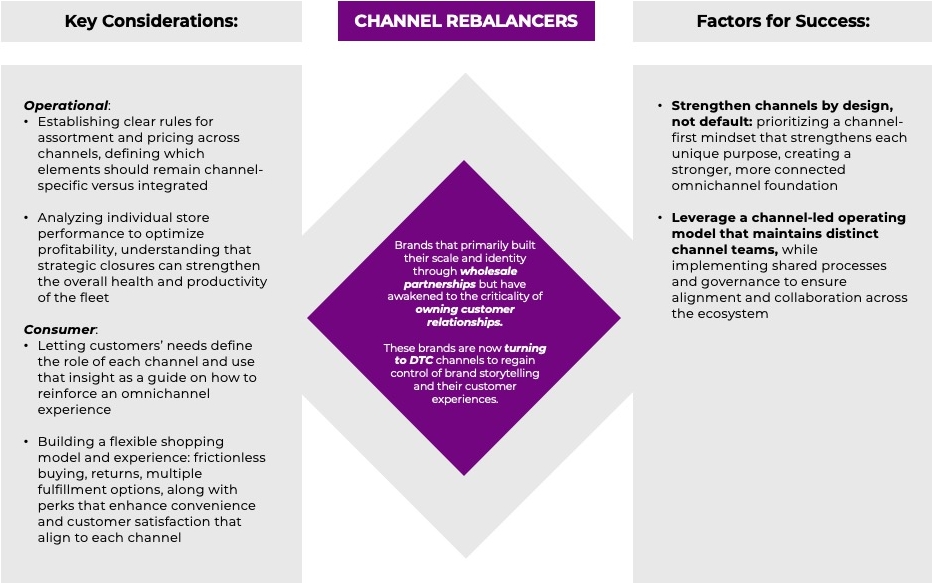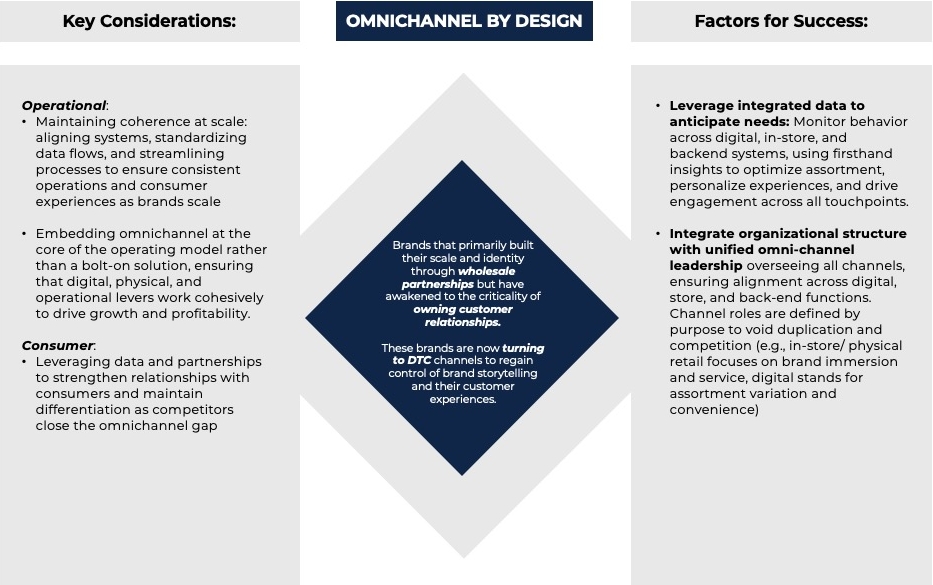From Channel Chaos to Omnichannel Control: The New Blueprint for Profitable Retail Growth
Back to All InsightsWhat began for many retailers as a survival pivot to digital during COVID has become one of the industries biggest growing pains. As consumer sentiment shifts and economic pressures mount, companies are grappling with bloated operations, fractured experiences, and unsustainable channel economics. This is leading to many ultimately missing the mark on connecting with consumers through an omnichannel strategy. Years of underinvestment in digital, capped by rushed upgrades, are starting to show their cracks.
As consumers cross channels and retailers, the expectation for consistent product, value, and experience are tied to your brand having a strong strategy, remembering there is no one-size-fits-all strategy for how brands engage and connect with consumers. The question is: how do you make digital and in-store work for you and your customer?
In this article, we will explore:
- How to assess if your digital investments were built for the long term
- Where omnichannel dysfunction erodes value, and how reframing its role can strengthen customer engagement
- What practical steps can drive profitable, scalable growth going forward
The importance of omnichannel retailing continues to accelerate. Consumers now expect more relevant digital touchpoints, and the impact of those interactions on brand perception and conversion is greater than ever. According to CRG’s Consumer Sentiment Survey, 61% of respondents say technology experiences significantly influence their purchasing decisions, with younger consumers (ages 18–44) far more influenced by digital engagement than their older counterparts.
The Digital Pivot Was Right — But Was It Sustainable?
During the pandemic, retailers understandably accelerated digital initiatives to meet changing consumer behaviors. However, in the rush to act, investments were made quickly, resulting in siloed business systems and fragmented operating models disconnected from physical retail.
These changes led to compounding challenges – duplicative systems, disjointed customer experiences, inconsistent brand touchpoints, misaligned organizational structures, and unsustainable P&Ls.
The next phase for retailers isn’t to swing the pendulum back to stores—it’s about smarter configuration. Omnichannel success relies on seamless encounters between the physical and digital worlds, creating an integrated experience that enhances, rather than competes with, the customer journey.

Questions to ask when assessing your omnichannel experience
- Did we build quick fixes that just keep up with competitors or sustainable capabilities that drive strategy?
- Are our physical and digital channels harmonized or cannibalizing?
- Are we optimizing for lifetime value (LTV) or still chasing short-term sales?
- What is the penetration of digital business and does that match where our customers are shopping?
- Who is steering the omnichannel experience: is it the customer or the retailer? And what does omnichannel retailing mean for our storytelling?

The Cost of Digital Overreach: 7 Deadly Symptoms
As omnichannel becomes the norm, opportunity lies in mastering the complexity, not avoiding it. From profitability pressures and fragmented customer experiences to fulfillment inefficiencies and digital complexity, each issue chips away at growth and brand strength. Internal misalignment and weak community engagement only amplify the problem, making it harder for companies to deliver a seamless, profitable experience across channels. The below list highlights main pressures that result from emphasizing digital without a strategic plan.
- Profitability pressures: High CAC, costly shipping/returns, over discounting
- Channel Cannibalization: Erosion of store traffic and utilization without resulting digital growth
- CX fragmentation: Inconsistent journeys across channels
- Fulfillment strain: Poor inventory visibility and channel silos, leading to stranded product and missed sales
- Tech sprawl: Underused, redundant tech investments
- Functional fragmentation: Siloed KPIs, misaligned ownership and organizational structures
- Engagement Gap: Limited interaction and weak brand resonance caused by broad, unfocused targeting
Bad Habits That Must Be Broken
What began for many as crisis-era band-aids during COVID has since hardened into structural flaws in today’s omnichannel strategy. Unsure of the efficacy of your omnichannel approach? Below are key indicators it may be working against you – Buying Business, Expansion without Alignment, Chasing Channels not Customers, Underbuilding the Brand, and/ or Technology without Strategy
Omnichannel Playbook: The Four Key Archetypes
The following four archetypes are designed to guide you—not to stereotype—by outlining the key considerations needed to win across both the unique operational and consumer dimensions of your business, and to ultimately drive long-term success.
Final Thought: Omnichannel isn’t about channels—it’s about coherence
Modern-day omnichannel is a coordinated system designed around the fluid, non-linear customer journey. Success requires seamless integration across discovery, conversion, fulfilment, and loyalty, using every potential consumer touchpoint to strengthen brand, build loyalty, and foster community.
Omnichannel is:
- A system, not a set of siloed channels
- Built on the premise that the customer journey is fluid and non-linear
- Dependent on coordination, not just digital investment
- Strengthening brand and customer loyalty, reinforcing community
The equation for growth has become increasingly complex. AI platforms like ChatGPT are quickly becoming the front door for brand exploration, product research and even product conversion. Retailers that are already struggling to improve their omnichannel strategy will be under additional pressure to incorporate AI into their existing customer experiences.
Winning today means orchestrating a seamless, proactive, customer experience across discovery, conversion, fulfilment, and loyalty, designed to anticipate needs rather than chase them. Prematurely prioritizing agentic commerce without a strong omnichannel foundation risk compounding performance challenges and undermining brand credibility. Your channel strategy, whether omnichannel or multichannel, should be a strategy that is intentional, profitable, and customer centric. The time for reactive, crisis-era models is over. What is needed now is a disciplined, future-fit approach that creates value, earns loyalty, and scales with intention.

